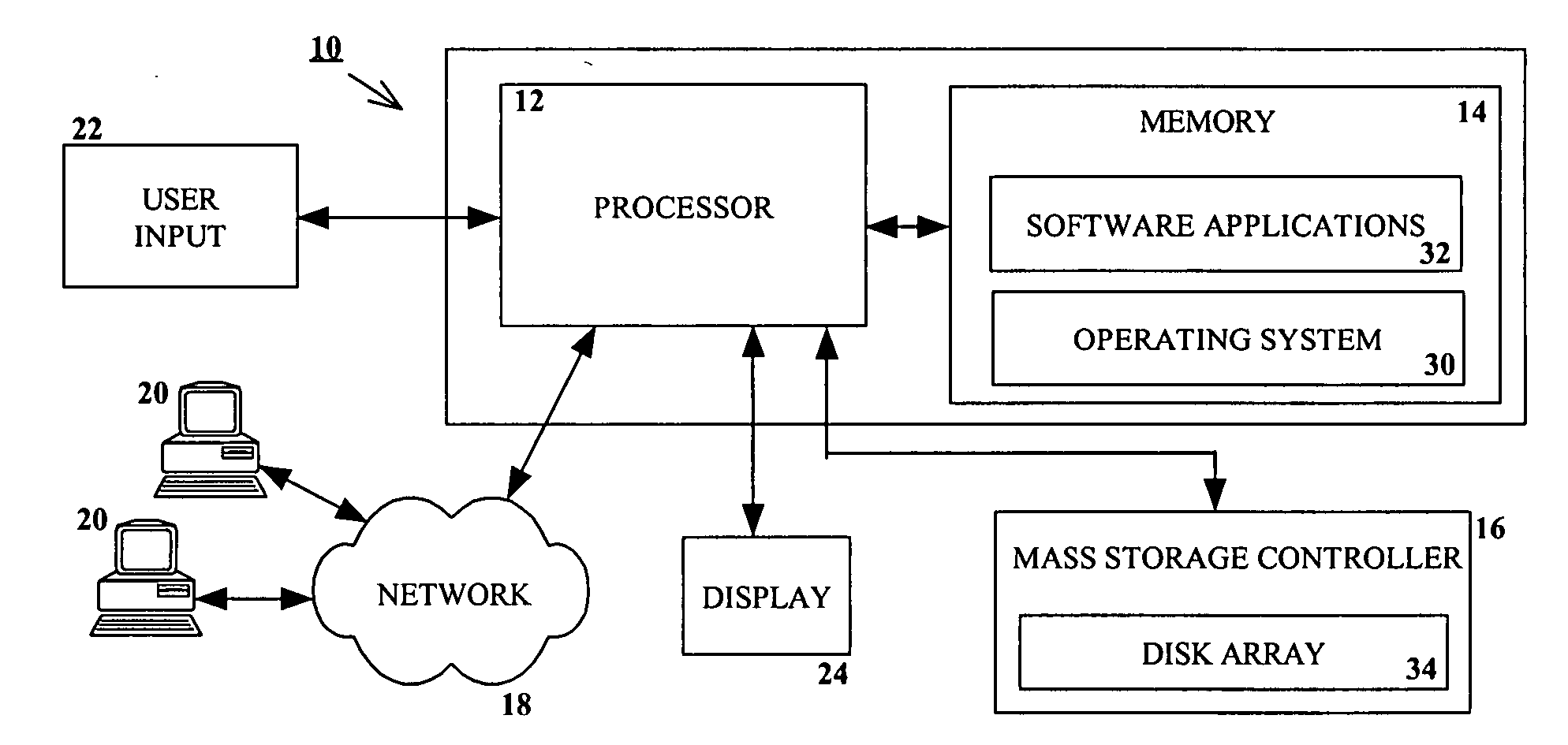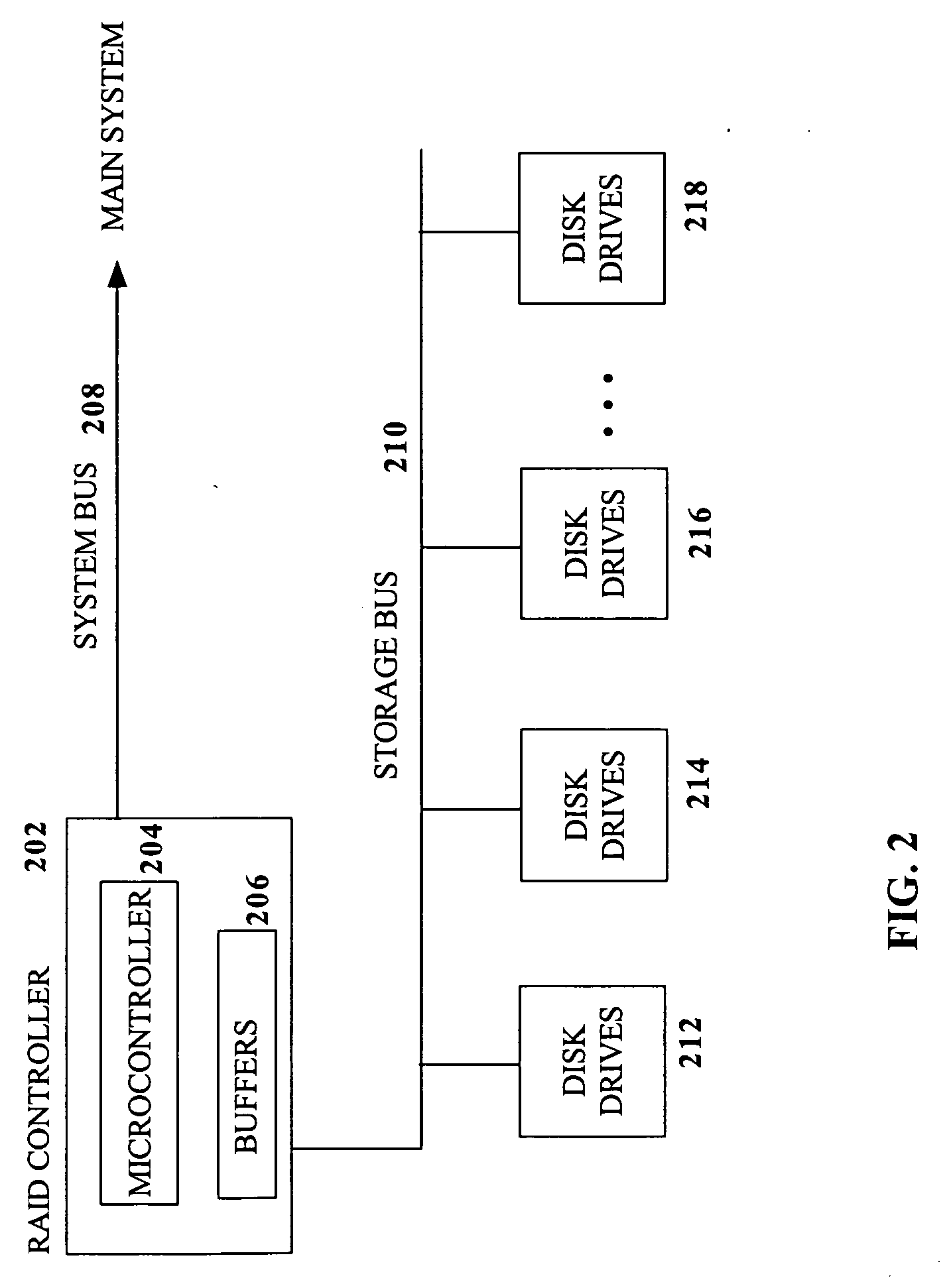Method and system for increasing parallelism of disk accesses when restoring data in a disk array system
a disk array system and parallelism technology, applied in the field of data protection methods for data storage, can solve the problems of increasing cpu overhead, complicated calculations that are also repetitive, and adding additional hardware required, so as to achieve less overhead and increase parallelism.
- Summary
- Abstract
- Description
- Claims
- Application Information
AI Technical Summary
Benefits of technology
Problems solved by technology
Method used
Image
Examples
Embodiment Construction
[0023] The embodiments discussed hereinafter utilize one or both of two techniques to increase parallelism and otherwise reduce the overhead associated with restoring data in a disk array environment such as a RAID-6 environment. One technique described hereinafter selects different subsets of disks to access in connection with an operation such as a rebuild or exposed read operation. Another technique described hereinafter overlaps read and write accesses associated with restoration operations performed with respect to multiple parity stripes.
[0024] Presented hereinafter are a number of embodiments of a disk array environment implementing the aforementioned techniques. However, prior to discussing such embodiments, a brief background on RAID-6 is provided, followed by a description of an exemplary hardware environment within which the aforementioned techniques may be implemented.
General RAID-6 Background
[0025] The nomenclature used herein to describe RAID-6 storage systems conf...
PUM
 Login to View More
Login to View More Abstract
Description
Claims
Application Information
 Login to View More
Login to View More - R&D
- Intellectual Property
- Life Sciences
- Materials
- Tech Scout
- Unparalleled Data Quality
- Higher Quality Content
- 60% Fewer Hallucinations
Browse by: Latest US Patents, China's latest patents, Technical Efficacy Thesaurus, Application Domain, Technology Topic, Popular Technical Reports.
© 2025 PatSnap. All rights reserved.Legal|Privacy policy|Modern Slavery Act Transparency Statement|Sitemap|About US| Contact US: help@patsnap.com



